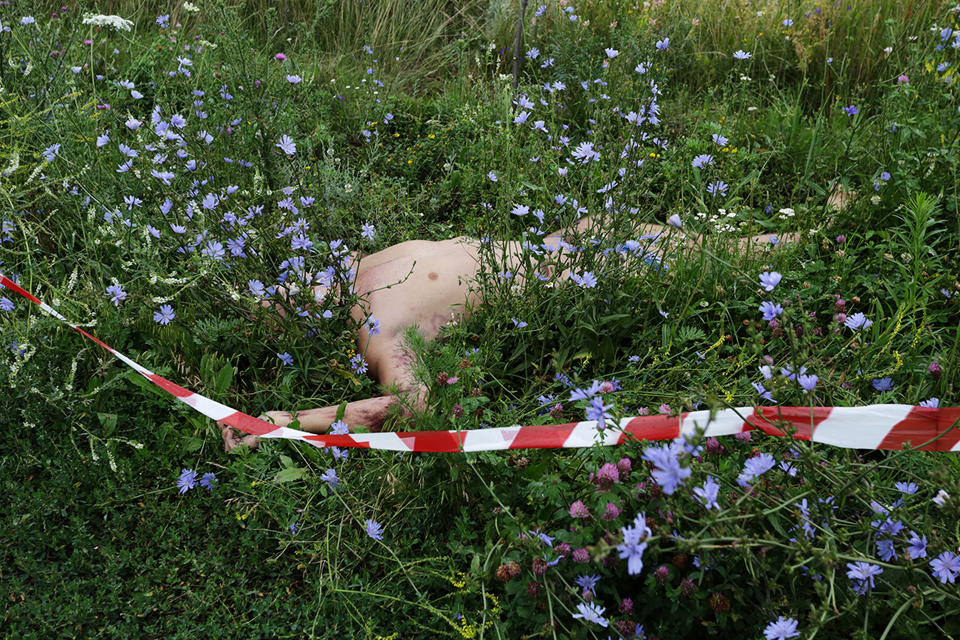
Beyond the line: How to shoot death
War is a routine and only the most resonating of its episodes make the newspaper headlines. The tragic death of 280 passengers of the Boing shot down in Eastern Ukraine is one of those. The photos taken at the sight of the unfortunate event spread rapidly all over the world heating up the discussion among the journalists as to what the limits of professional ethics should be, whether it’s possible to translate the horror of the event without showing dead bodies, and whether the photography that captures death has any room for aesthetics.
Bird In Flight spoke to the photographers who often work in various places of conflict about what rules they follow during the shoot and what reaction they expect their audience to have. We also asked photo editors about the photos they try to avoid publishing and the publications that proved to be a bad choice.
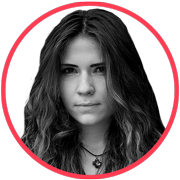
When I got close to the airplane I was shocked to the point of not knowing what to shoot. I realized that we journalists are supposed to do our job. But I had my doubts as to what I was and was not allowed to shoot. I tried to establish my own moral limits and decided not to photograph up close.
I was worried that the photos would be offensive towards the relatives of the victims. And this contrast – a beautiful field, flowers – made me extremely emotional. When I shot, I tried not to show the face or lower extremities.
If a body was distorted I wouldn’t take the picture. Did the shot end up being too aesthetically correct? Yes, there is an opinion out there that we need to show the complete morbidness of the events, and I had shots like that. But if it was my own death I would want it to be presented in a beautiful way. I wouldn’t want my torn arm to be in the picture. Our edition didn’t publish morbid photographs, yet I think that when this happens, people need to see all the horror. Because it’s not just an airplane crash – it’s the consequence of the war. If it won’t horrify you, you’ll stay home on your couch thinking that nothing awful is happening out there.
{
“img”: “/wp-content/uploads/2014/07/ethics_slide1_960x720_01.jpg”,
“alt”: “The cover of Toronto Sun, Canada, 18 July 2014. The crash of Malaysian Airlines in Eastern Ukraine.”,
“text”: “The cover of Toronto Sun, Canada, 18 July 2014. The crash of Malaysian Airlines in Eastern Ukraine.”
},
{
“img”: “/wp-content/uploads/2014/07/ethics_slide1_960x720_02.jpg”,
“alt”: “Cover of De Volkskrant, the Netherlands, 18 July 2014. The crash of Malaysian Airlines in the Eastern Ukraine.”,
“text”: “Cover of De Volkskrant, the Netherlands, 18 July 2014. The crash of Malaysian Airlines in the Eastern Ukraine.”
},
{
“img”: “/wp-content/uploads/2014/07/ethics_slide1_960x720_03.jpg”,
“alt”: ” Обложка The New York Times, США, 18 июля 2014 года. Крушение малайзийского боинга в восточной Украине.”,
“text”: ” Обложка The New York Times, США, 18 июля 2014 года. Крушение малайзийского боинга в восточной Украине.”
},
{
“img”: “/wp-content/uploads/2014/07/ethics_slide1_960x720_05.jpg”,
“alt”: “Cover of Morgenavisen, Denmark, 18 July 2014. The crash of Malaysian Airlines in the Eastern Ukraine.”,
“text”: “Cover of Morgenavisen, Denmark, 18 July 2014. The crash of Malaysian Airlines in the Eastern Ukraine.”
},
{
“img”: “/wp-content/uploads/2014/07/guardian960x720.jpg”,
“alt”: “Cover of The Guardian, Great Britain, 18 July 2014. The crash of Malaysian Airlines in the Eastern Ukraine.”,
“text”: “Cover of The Guardian, Great Britain, 18 July 2014. The crash of Malaysian Airlines in the Eastern Ukraine.”
},
{
“img”: “/wp-content/uploads/2014/07/ethics_slide1_960x720_07.jpg”,
“alt”: “The cover of Commersant, Russia, 18 July 2014. The crash of Malaysian Airlines in the Eastern Ukraine.”,
“text”: “The cover of Commersant, Russia, 18 July 2014. The crash of Malaysian Airlines in the Eastern Ukraine.”
}
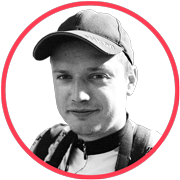
News photography sets one goal – to inform about what’s happening. Everything else is decorations. Some photos live on for dozens of years, become symbols, others (the majority of all, needless to say) – will fade away within a couple of weeks.
I don’t have predetermined rules when it comes to what and how to shoot – I always decide on the spot. While I think that photographing corpses in case of a technogenic catastrophe would be excessive, I believe that war photography is the exception to the rule. But of course certain limits must be observed. A lot depends on a political standpoint of the publication or agency you are employed with – some will print bloody pictures while others prefer a more reserved version.
Finally, let’s remember that a photojournalist is not a criminalist, therefore should maintain a certain level of artistry even while shooting horrors.
Every time I shoot someone I ask myself: “Would I want to be photographed if I were them?”. When I realize that I wouldn’t, I try hard not to squeeze that shutter button too often. I mean, I will still attempt to capture the important parts – but will try to do it in such a way that it wouldn’t bother others. As far as the professional cynicism goes – it’s just the unavoidable part of the job. We have to work with those who fell a victim to unfortunate circumstances, and it’s simply impossible to sympathize with everyone. It’s counterproductive and weights heavy on your heart. Yes, in time you develop a certain attitude to process things in a simpler way, to be less emotional. However, I must say that the cynicism of photographers and journalists is greatly exaggerated.

Everyone should be aware that victims in conflict zones or at the catastrophic scenes had friends and relatives. Especially now, with the internet readily available, the chances to see your loved ones in a way you wouldn’t want to are high. Photographers should ask themselves – do I want to see my relatives that way? Yesterday, at the sight of the plane crash in Eastern Ukraine, I didn’t take any photos of the body parts, even though I knew that my clients would ask for it. There were other things to photograph, things that could still tell the story. My editors asked me to photograph victim’s belongings instead of their distorted remains. Anyway, I usually follow my intuition and look through the lens to determine whether something is acceptable for being seen by the relatives of the victims. We, photographers, need the freedom to choose our way to show events. And when the event becomes history, we sometimes have to show the horror of the situation.
{
“img”: “/wp-content/uploads/2014/07/warning-eng.jpg”,
“alt”: “Graphic content”
},
{
“img”: “/wp-content/uploads/2014/07/ethics_slide2_960x640_04.jpg”,
“alt”: “News transmission of Russian TV channel LifeNews. The crash of Malaysian Airlines in Eastern Ukraine.”,
“text”: “News transmission of Russian TV channel LifeNews. The crash of Malaysian Airlines in Eastern Ukraine.”
},
{
“img”: “/wp-content/uploads/2014/07/ethics_slide2_960x640_05.jpg”,
“alt”: “Post ‘Photographs from the sight of the Malaysian Airlines disaster’ in International Business Times.”,
“text”: “Post ‘Photographs from the sight of the Malaysian Airlines disaster’ in International Business Times.”
},
{
“img”: “/wp-content/uploads/2014/07/ethics_slide2_960x640_06.jpg”,
“alt”: “Post of Time LightBox ‘The crash of Malaysian Airlines in Ukraine: unreal scenes by photographer Jerome Sessini.'”,
“text”: “Post of Time LightBox ‘The crash of Malaysian Airlines in Ukraine: unreal scenes by photographer Jerome Sessini.'”
}
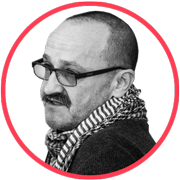
Once, I and my colleagues conducted an experiment: our boss found a photo of a beheaded terrorist in the pool of his own blood, and offered it for publishing to various large scale editions. None went for it – readers rarely want to see photos that are meant for a forensics unit. If the goal is to transmit the horrors of the events, a good photojournalist must do it through the image, not via blindly shooting loose body parts.
There are different ways to present a disaster. I used to work with “Magnolia-TV” some time ago, and we had to shoot a special about a dead infant discovered at the bottom of a trash bin. When we arrived at the scene we saw a bunch of children curiously looking at the bin – this was our shot that would have relayed the essence of what was going on. Only a professional is able to capture that shot. I do not believe that photographers who work in danger zones become cynical in time – this won’t happen to a person with stable psyche.
There was the following case in my past experience: in January of 1995, during the very first war in Chechnya, many of the most reputable photographers arrived in Grozny. We lined up along a fence on one of the streets and saw an old woman walking with a bucket. A sniper shot her in the head and she fell. What do you think the photographers did? They stopped filming and ran under the bullets to help the dying woman. One of them stayed behind to capture how she was carried out by the others. His boss later refused to publish the shot. The main task of war photography is to do everything possible to prevent events like that from happening again. It’s vital to capture the history of a country, a humankind, a nation – everyone must know it and that helps in avoiding numerous future mistakes.
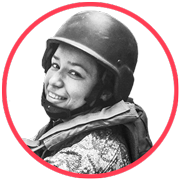
Shooting war depends on the situation, each case and story is unique. War is ugly. War is graphic. But it’s useless to use images that are so graphic that the reader’s reaction will be to turn the page too quickly. At the same time, it’s important to show the story as honestly as possible. I think it takes empathy to understand this balance, and consideration for the victims and their families is essential.
The two most important qualities in a war photographer are empathy and the ability to stay calm under stress. If you can’t handle seeing the horrors that war produces, you’re probably not capable to do this job. On the other hand, it’s just as damaging to be so disconnected from emotions that you lose the ability to empathize with the people around you, and the viewers later. Sometimes it’s a matter of personality, other times a break from work is needed to regain this balance.
I believe that war photography involves documenting events as honestly as possible, it help the viewers understand war even when they are fortunate enough to never experience it firsthand. And I believe at times showing a dead body is part of this job, but most of the time expressions of pain and grief on those who survived go much further to help people comprehend it.
While working in Syria I saw more than I photographed. For instance, many of the bodies that are covered in my photographs were uncovered moments before, but I felt the message and the documentation were completely honest even if I chose to wait until they were covered to take the picture. But there were a few cases where I showed the bodies uncovered too, because it felt important in that specific case. I try to keep my emotional balance at the time to think as clearly as possible despite the tragedy in front of me so I can compose the image in a manner that will be honest, but not disrespectful to the victims and their families. One of the most difficult days during my work in Syria was witnessing the burial of six siblings that were killed when a government helicopter dropped a bomb that destroyed their home. I chose to take a picture that showed one of the bodies uncovered, as the family expressed their desire to have the world see what was done to them, and I also took another of the bodies after they were wrapped in burial sheets. I tried to stay focused while I was there, but cried a lot later that day, after the photos had already been edited and sent. Both versions were published by different newspapers.
{
“img”: “/wp-content/uploads/2014/07/warning-eng.jpg”,
“alt”: “Graphic content”
},
{
“img”: “/wp-content/uploads/2014/07/ethics_slide3_960x720_01.jpg”,
“alt”: “Cover of Boston Globe, USA, 16 April 2013. Terrorist attack during Boston marathon.”,
“text”: “Cover of Boston Globe, USA, 16 April 2013. Terrorist attack during Boston marathon.”
},
{
“img”: “/wp-content/uploads/2014/07/ethics_slide3_960x720_02.jpg”,
“alt”: “Cover of Daily Mirror, Great Britain, 21 October 2011. The death of Gaddafi.”,
“text”: “Cover of Daily Mirror, Great Britain, 21 October 2011. The death of Gaddafi.”
},
{
“img”: “/wp-content/uploads/2014/07/ethics_slide3_960x720_03.jpg”,
“alt”: “Cover of New York Post, USA, 4 December 2012. Death in the subway of NYC.”,
“text”: “Cover of New York Post, USA, 4 December 2012. Death in the subway of NYC.”
},
{
“img”: “/wp-content/uploads/2014/07/ethics_slide3_960x720_04.jpg”,
“alt”: “Cover of New York Daily News, USA, 22 September 2013. Attack at a mall in Kenya.”,
“text”: “Cover of New York Daily News, USA, 22 September 2013. Attack at a mall in Kenya.”
},
{
“img”: “/wp-content/uploads/2014/07/ethics_slide3_960x720_05.jpg”,
“alt”: “Cover of Life, USA, 26 November 1965. Reality of Vietnam War.”,
“text”: “Cover of Life, USA, 26 November 1965. Reality of Vietnam War.”
}
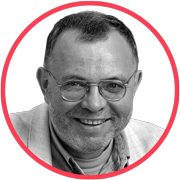
I think that a photograph is always a document too, a proof. That’s why a photographer must shoot everything. In the process of getting a publication ready, only the shots that support the idea of the article get selected, as in the end it’s a collective product. A lot depends here on the standpoint of the staff, the preferences of the chief editor and, undoubtedly, the photographer’s talent.
I shoot under any circumstances. But there is a difference: taking a picture is one thing and publishing it is another. Here’s what happened to me once. In October of 1992 I shot the place of the AN-124 crash near Kiev. Among the photos that were published, there was one that captured the face of the dead pilot that literally melted into his helmet because of the intense heat of the fire. The shot was terrifying and powerful. Later on, I was told that the pilot’s family was extremely traumatized after seeing the photo. Ever since I always keep in mind that every person from my pictures has the loved ones.
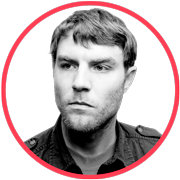
When it comes down to the question of professional ethics, there is a middle ground to it. It’s important to do it in the way respectful to the victims and their families. It’s a horrific scene, things I wish I’d never see with my own eyes and things I would not want to see. To show these very graphic images you should have a really strong justification, considering that the victims are identifiable. There are probably some relatives out there who didn’t know that their loved ones were on that plane. I don’t believe that the identifiable pictures are a good choice. They do give people a séance of what it’s like out there, and confirm that yes, people really died. It’s the lowest common denominator of photography – just to pick a straight forward of the corps. That is not something in photography which creates understanding. You should work hard to make sure that, if you are going to photograph a body, it relays a message, not just the fact that it was disgusting and sad.
We live in the era of social media when everyone decides for themselves what to post on the internet. Now, more than ever, photojournalists need to have skills and training to be able to edit their images. Of course, there are always civilians with cameras at the site, and you can’t do anything to stop them. Whether it’s easy to share it on social media or not, I don’t think it changes the tastefulness of pictures to begin with. We’ve always had cameras, now as well as in 1985, and I think people would have taken those pictures back then too. Nothing really changed, only the technology did, but not the ethics. The desensitization of the general public that all of the above created is the same as the idea of the violent video games. We worry about it desensitizing public to violence. It’s hard to say what effect it would have in the future. It depends on the time frame. Seeing images right after it all happens is slightly different than seeing them in a year or two – you have more time to reflect upon it. As to its consequences in the big picture – it’s a hard question for me to answer.
{
“img”: “/wp-content/uploads/2014/07/warning-eng.jpg”,
“alt”: “Graphic content”
},
{
“img”: “/wp-content/uploads/2014/07/ethics_slide2_960x640_01.jpg”,
“alt”: “Anastasia Vlasova’s post on Instagram. Malaysian Airlines’ crash in Eastern Ukraine.”,
“text”: “Anastasia Vlasova’s post on Instagram. Malaysian Airlines’ crash in Eastern Ukraine.”
},
{
“img”: “/wp-content/uploads/2014/07/ethics_slide2_960x640_02.jpg”,
“alt”: “A post from VKontakte, a social media site. The crash of the Malaysian Airlines’ Boing in Eastern Ukraine.”,
“text”: “A post from VKontakte, a social media site. The crash of the Malaysian Airlines’ Boing in Eastern Ukraine.”
},
{
“img”: “/wp-content/uploads/2014/07/ethics_slide2_960x640_03.jpg”,
“alt”: “A post from VKontakte, a social media site. The crash of the Malaysian Airlines’ Boing in Eastern Ukraine.”,
“text”: “A post from VKontakte, a social media site. The crash of the Malaysian Airlines’ Boing in Eastern Ukraine.”
}
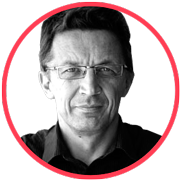
There are photos that deliver news and there are photos that are basically just unsympathetic photo hunt. Those two things are different from each other. A news photo can also be too revealing, appalling and frightening to the viewer, but never demeaning. That’s the whole reason why all the big names in the infospace refused to purchase photos of Princess Diana after the deadly car crash in the Parisian tunnel.
Have I ever regretted publishing a photo? Unfortunately, I have. I attended the funeral of poet Dmitry Prigov whose death was very painful to me, and did a reportage too – as I thought at the time, it was just an objectively respectful thing to do. After I posted it in my blog I received negative feedback from several of my acquaintances who also knew Prigov, and ended up removing the material. I don’t bring camera to funerals any more.

First and foremost, photography must tell a story of the event, relay a certain informational message. I would add that it has to be anti-war, yet everyone has their own way of seeing the fastest path towards peace. The same image can be processed differently: it might inspire you to begin collecting humanitarian aid, and someone else – to raise funds for volunteers. I never refused to take a picture because of its brutality, however sometimes I didn’t shoot because of the respect for the feelings of those in front of the camera. The gruesomeness of war can be relayed in other ways rather than literal show-and-tell of everything.
However, it’s not a general rule, each photographer and each publication make their own decisions. During war, or any extreme or critical situation for that matter, your sensations become duller. It’s neither good nor bad, it’s just a defense reaction of your psyche. I felt it for the first time in the summer of 2012, during a flood in Krymsk. I arrived there in the middle of the night and started feeling incredibly emotionally vulnerable. But the very next morning, after spending the night at the tent of the MCS workers, those feelings dissipated. Being in that mental state I had hard time understanding what shots would project a stronger impression on the viewer. This made it difficult for me to select the best photos.
New and best




